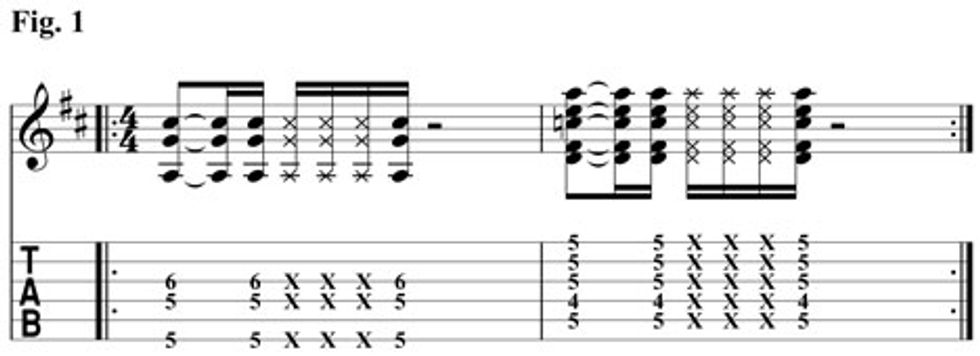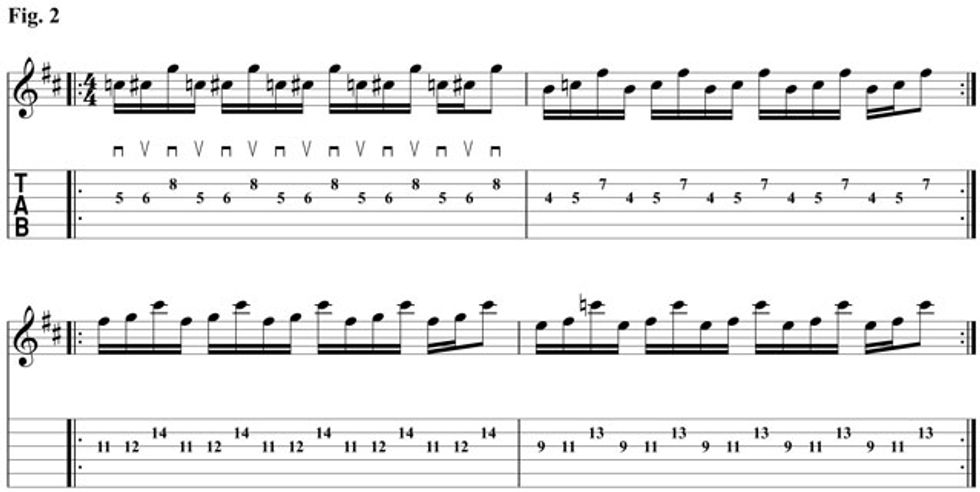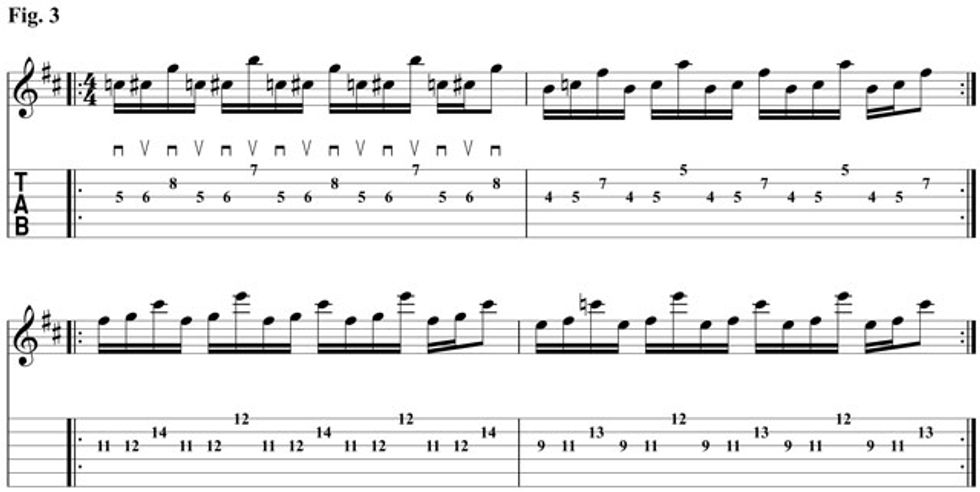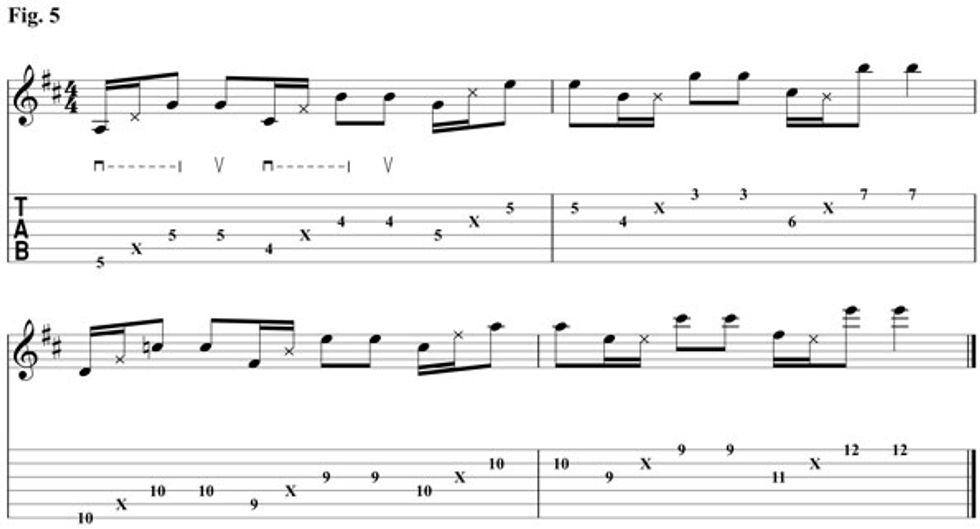Which is better, alternate picking or economy picking? The choice is easy if you understand how to pick the right tool for the job.
Chops: Intermediate
Theory: Beginner
Lesson Overview:
• Understand when to use
economy picking and when to
use alternate picking.
• Learn how to switch
between different alternate-picking
patterns.
• Combine percussive “unwanted”
notes with economy picking to
create ghost note patterns.
Which is better, a fork or a spoon? A pair of scissors or a roll of duct tape? A snow shovel or a hair dryer? My answer, which I hope you’ve already guessed, is “It depends on what you’re trying to do.”
All too often, I’m asked, “Which is better, alternate picking or economy picking?” My answer is the same as the snow shovel versus the hair dryer: It depends on what you’re trying to do.
At first glance, these picking styles appear to be attacking the same problem— how to get your pick from one string to the next. But in the context of a complete phrase and its particular fingering patterns, one technique does often work better than the other. But that’s just for that phrase. Another one might come along and require something completely different.
Lately, I’ve been working on improvising over a I–IV progression. You can find this kind of groove and chord progression in songs like “Feelin’ Alright” by Joe Cocker or “You Can’t Always Get What You Want” by The Rolling Stones.
Let’s start with Fig. 1, which is a rhythm guitar pattern that gives us the basic sound of the I–IV progression.

I found a three-note solo pattern that I like to loop over each chord. I tried both alternate and economy picking for this pattern, and I picked the snow shovel—I mean alternate picking. But even armed with this technique, I am faced with a challenge. Because it’s a three-note phrase (picked down-up-down), the next “loop” of the phrase requires the whole pattern to reverse (up-down-up). This entire time, the left hand remains the same. So I have to get used to reversing the picking pattern every three notes, in relation to the consistent left hand.
This is almost as confusing to play as it sounds, unless you listen to it and practice it a lot. Then it becomes simple and rewarding. Let’s check out the notes in Fig. 2.

Fig. 3 is a version of the phrase with a little bit of string skipping added for some wider intervals on top. The picking remains the same. The next example, shown in Fig. 4, still fits over our I–IV progression, but uses wider intervals to make it happen. Again, I’m using alternate picking.


Because there was a lot of string skipping in that last example, I thought that it would be a good place to show where economy picking specifically does not work—because of the danger of running into the unwanted skipped string. But no theory can stand up unless you test it, so I dove in and tried to use economy picking to see what would happen. And I was treated to a great surprise! The “unwanted” notes sounded really cool. Actually, I muted them with my left hand, so they became percussive ghost notes. The new rhythm that came out in Fig. 5 by adding these ghost notes was groovy and unique. Let’s check it out.

Metaphorically, I guess this means that if you dry your hair with a snow shovel, it certainly won’t turn out the same as it usually does. And it might turn out better!
Or as Mick puts it: “If you try sometimes … you get what you need.”

